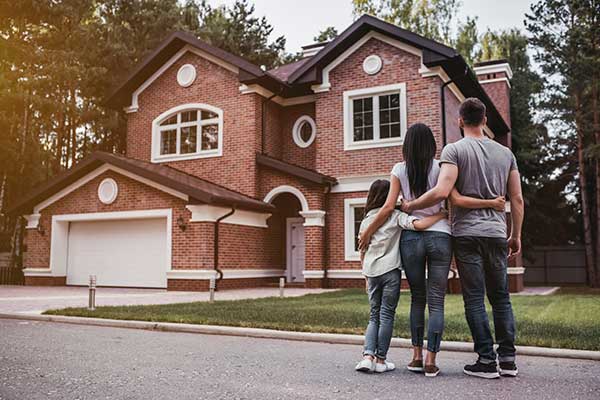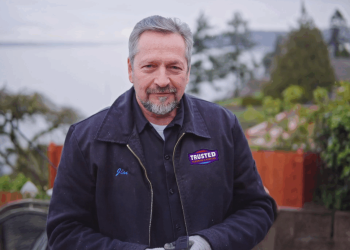Table of Contents
Radon is a naturally occurring radioactive gas that results from the breakdown of uranium in soil and rock. It enters your home by flowing up through the soil and seeping into cracks in your foundation walls and floors. If you are building a new home or renovating an old one, it’s critical to keep the dangers of radon gas in mind.
Why should you measure radon levels?
For decades, few people were aware of the danger radon gas posed inside their own homes. Fortunately, that knowledge and awareness are now more widespread.
Today, we know that exposure to radon gas is clearly linked to lung cancer. In fact, the Environmental Protection Agency (EPA) finds that long-term radon exposure is the leading cause of lung cancer in non-smokers and is responsible for at least 21,000 deaths per year in the United States alone.
Radon is a colorless and odorless gas, meaning that it is impossible to detect by sight, smell, or taste. Despite growing awareness, many people breathe high levels of this toxic gas every day without even realizing it.
Because radon gas is not detectable by the human senses, there is no way to determine one’s exposure without testing. However, a single test is not enough to accurately assess risk — radon levels fluctuate due to several seasonal factors, including weather and atmospheric pressure.
Thankfully, several professional-grade radon testing devices have hit the consumer market that allows homeowners and business owners to get accurate, quick, and reliable results. These devices often provide their first results in minutes rather than days and provide snapshots of average daily, weekly, and monthly levels.
Investing in one of these devices during the construction process can ensure that occupants are never at risk of the consequences of radon exposure.
Now that you are aware of the radon risks do not make excuses about the costs of testing or put off assessment for a later date. If radon accumulates in your home over time, radon-induced lung cancer is an all too real consequence.
The Mayo Clinic lists the symptoms as ongoing chest pain, persistent coughing, unintended weight loss, wheezing, and coughing up blood. Many discover these symptoms only after the cancer is in its advanced stages.
Radon testing and mitigation should be done as soon as possible. If you are making plans to build a new house or renovate your existing home, there are simple and affordable steps you can take to keep this gas outside where it belongs. Taking action to mitigate radon gas during construction is the simplest way to ensure your new home is radon-free and safe for your family.
How to Evaluate Your Building Site For Radon Gas
Radon occurs naturally all over the world and in all fifty states. Some regions have higher average indoor concentrations than others. For example, a greater percentage of homes in the midwest and northeast will have dangerous indoor radon levels.
Still, homes with high radon are found in every state, which is why the EPA recommends all homes be tested for radon. The only way to know is to test.
Because levels tend to vary depending on location, elevation, and soil conditions, it is particularly important to include radon-resistant features when building a new home or renovating an existing one. Taking these important steps during construction offers you peace of mind by knowing your new home will be safe for you and your family.
When building or renovating, it’s important to obtain the services of a knowledgeable contractor familiar with the design and installation of these radon-resistant features. Since one cannot determine if a home will have elevated radon levels until after it is built, the key is to include design features that make it extremely simple and inexpensive to mitigate if needed.
Radon mitigation technology is as important to a new construction as new build home insurance is.
How Radon Mitigation Saves Time and Money
Building radon-resistant housing involves installing a skeletal soil depressurization system below the slab that can simply be activated by installing an inline fan in the event the home tests high for radon once construction is complete.
When you encounter test results revealing high radon levels, it can be extremely frightening. However, installing an active mitigation system in an existing building or activating a skeletal system that was included in the original construction design will reduce these levels dramatically.
These systems work by caulking and sealing foundation openings to the soil, installing a pipe with an inline fan through the concrete slab (or under a membrane in the crawlspace), continuously sucking the radon from the soil under and around the foundation, and exhausting it safely to the outdoors where it quickly dilutes.
The good news is that an active soil depressurization system (ASD) can reduce indoor radon concentrations by up to 99%. In addition, it will prevent humidity and other dangerous soil gasses from entering the living space, adding a further layer of risk deduction.
Unfortunately, simply caulking and sealing openings in the foundation is not an effective stand-alone mitigation strategy; it’s impossible to completely seal the living space from the soil.
However, sealing is nonetheless a crucial part of the soil depressurization process because it prevents conditioned indoor air from being needlessly drawn to the soil and up the exhaust pipe by the ASD fan.
For those openings that cannot be accessed and sealed, creating a lower pressure in the soil below than inside the home can allow the direction of any air leakage between the two to flow from the house down instead of from the ground in.
Testing for radon is easy and inexpensive. Radon gas is a serious health hazard that you can no longer afford to ignore. Taking action during construction makes your efforts to decrease radon levels more effective and affordable.
Whether you are building a new home or renovating an old one, ask your contractor to include radon-resistant design features. By integrating this additional step into your building process, you can protect yourself and your family from this toxic gas.
Author Bio:
— Insoo Park is CEO of Ecosense Inc., an innovator in the radon gas monitoring industry, providing people peace of mind through its intelligent and highly accurate radon detectors for homes, educational campuses, assisted living centers, community centers, and commercial buildings. The company’s smart real-time radon detectors utilize a patented ion chamber detection technology with high-accuracy performance capable of delivering the first radon result in minutes.









